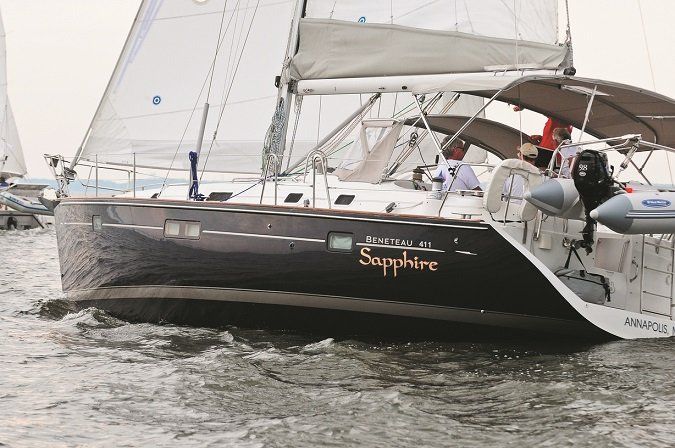Fuel Tank Wisdom
Simple tank fill advice from an old fuel oil delivery guy – when filling your boat diesel tank listen to the sound coming from the tank vent, it is attached directly to your tank. The fueling sound will change when the tank fills and fuel enters the vent line. Stop then. Dont leave fuel sitting in your fill hose in the off-season.
Rob Wilson
Sapphire, Beneteau 411
Anne Arundel County, Maryland.
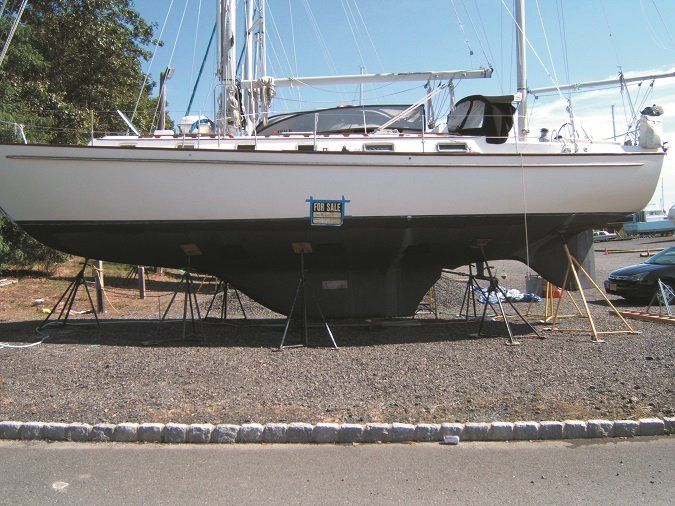
Chain Hooks
For several years on our Pearson 424 ketch we used a chain hook recommended by Earl R. Hinz in The Complete Book of Anchoring and Mooring, 2nd ed. (Fig. 5-10, p. 117) using two 20-foot twisted nylon snubbers belayed to mooring cleats. With two snubbers, the load is distributed and the bow kept into the wind or current. If more scope is needed to accommodate increased wind, one snubber can be slacked and a second length of line tied to it; repeated for the other snubber. After several years, we noticed the galvanizing was wearing off on parts of the chain, no doubt as a result of the chain hook abrading links. After re-galvanizing the chain, we started to use rolling hitches. No hardware and easier on the links. The hook worked fine except that it sometimes jumped off the links and we began as a routine matter to mouse the hook to the chain.
Norris Larson
Easy Reach, Pearson 424
Evanston, IL
We looked at a variety of chain hooks, including the common lifting hook that Hinz recommends in the March 2017 and February 2016 issues, available online. Our favorites designs, including a DIY modification, include a latch to keep the hook in place.
Why No Sail Inspection
The Spring Checklist could benefit from some editing and, perhaps, breaking it apart into sections.
Some items could be more accurately put in a General Boat Integrity and Safety list: a one-time list. The transom ladder might certainly be so listed: it is certainly not going to change or lose a step over the winter.
Other items are best thought of as Laying-up List. Heading this would be the suggestion to remove sails and inspect. The last thing you want to do is bring sails in for work in the spring when they are very busy and you will not see your sails again for weeks or longer. These and numerous other items on your Spring list are far better done in the fall.
There are many more examples.
I write not so much as the suggestions made are bad or misguided, but rather that PS loses its rightly earned mantle of practicality and good sense with such obvious areas where one scratches ones head. The article would be far more helpful and effective if more sharply focused.
Dick Stevenson,
s/v Alchemy, Valiant 42
St. Margarets Bay, Nova Scotia
Preventing Hypothermia
Your recent report on hypothermia is interesting, but it misstates what happened in the tragic accident involving Jon Santarelli. The crew believe he may have been injured by a collision with a stanchion in the process of falling overboard. More importantly, he stayed afloat for at least 10 minutes while the crew made three attempts to recover him. They were unable to stop the boat the first time, the second time a wave lifted the boat over him, and the third time he slipped underwater just as they were reaching for him. The point of the article is relevant in that he was completely incapable of assisting in his own rescue even though he was an excellent swimmer (he had completed a half-Ironman in the past, which involves a 1.2 mile open water swim). The other important point is that this was an experienced racing crew that had just completed a COB drill on a hat in flat water before the race began. Trying to rescue a COB in big waves and high winds (when a real COB is likely to occur) is much more difficult and requires different techniques. The accident report suggests that the outcome may have been different if the crew had deployed the boats Lifesling, although it is unclear if Mr. Santarelli could have used the Lifesling to keep him self afloat.
Clay Greene
Cattywampus, Catalina 387
Milwaukee, WI
Thanks for this comment. The full committee report produced in the wake of Santarellis death is available online at https://www.cycracetomackinac.com/assets/1/7/25Feb19_Imedi_Incident_Report.pdf.
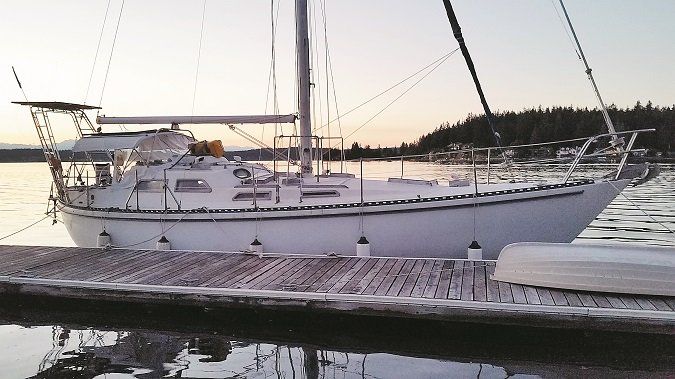
Bilge Pump Sense
I have now upgraded my small bilge pump from a Rule-Mate 750 to a Rule-Mate 1100 in order to give more lift pressure to the thruhull from my very deep bilge. I kept the smaller 3/4 hose to minimize the backflow volume of water and installed a check valve at the pump but enough water still remains to keep the pump running. Ive considered installing a thruhull on the stern, a straighter run with fewer turns, but the hose run would be longer with the same rise to the waterline. Raising the small pump will only result in more water in the bilge. So, I keep my large Rule 3700 GPH pump activated 24/7 and only use the Rule-Mate 1100 GPH pump manually; not ideal and a waste of money for this automatic pump
Mike Hirko
Tayana Vancouver 42
Gig Harbor, WA
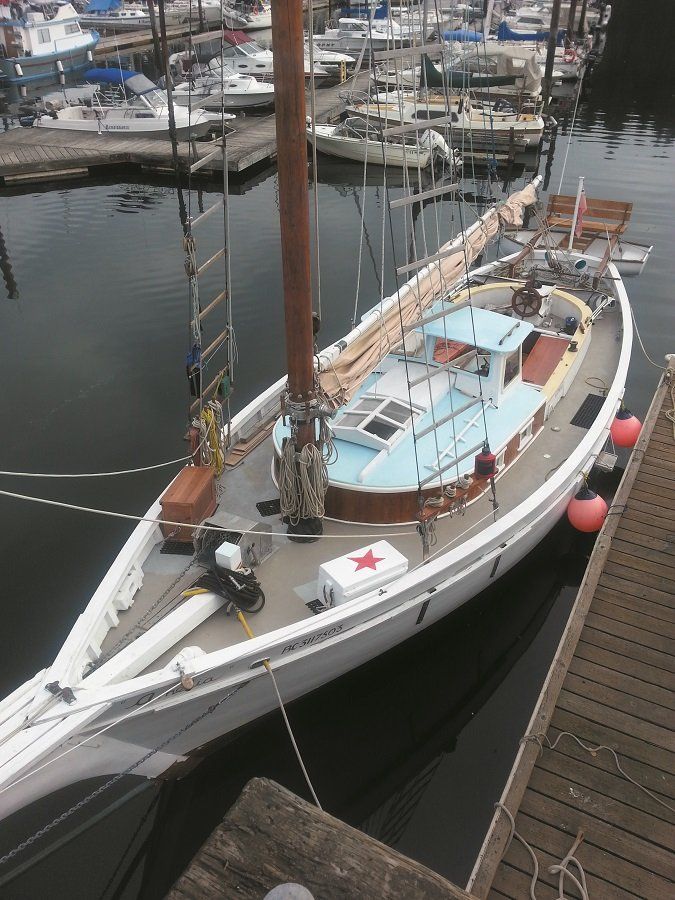
Hunter Lover Sounds Off
Regarding your review of the Hunter 30. What a pile of balderdash! Having built, serviced, sailed and designed boats on the west coast, and recently considering buying a Hunter 30, Ive looked over a few of them. I can’t find anything major wrong with the trim or the woodwork, the joinery is as good or better than most.
Equally, the hulls are sound and blister free after 30 years, and no delamination is present. Yet these boats were looked after., They sail really well, they look fine (I built two Friendship sloops so it takes a bit of a turn for me to say anything made of frozen snot looks good). Additionally, the walk through transom is a real blessing when getting in a dingy or swimming. How does that work in a massive following sea? I don’t know but more than a few open transom boats have survived them.
Bluewater boats. This is another phrase thrown around by armchair captains, and many people trying to sell their boats to novices. Most of so called bluewater sailing is dependent on the skipper and crew and their ability to read the weather, pick the course, fix things as they go, and navigate.
Yes, some boats are heavier laid up and have skegs and full keels and stronger rigs, however theres nothing to stop one from beefing up this and that before you go, unless youre utterly useless and have to hire people to do everything. God help you. Start learning now.
A sixteen-year old-kid has circumnavigated in Cal 26. Reeds tied together have crossed the pacific. Idiots have set sail from Europe in lousy boats and a copy of how to navigate and made it to the Bahamas. Mr. Nutrino left New York and crossed the Atlantic in fifty tons of garbage tied together and made it to Ireland.
Most of the negative stuff on Hunters comes from people jealous of the lines, speed and space provided by exceptional design and thoughtful planning. It was interesting to read another sailing site where a Hunter owner actually challenged the naysayers for some empirical hard evidence, and you guessed it, it was something someone read somewhere else. No actual experience, no actual proof.
Ive had Bayfields, Catalinas, Westerlies, Contessas, C and Cs. Some were slugs, others had all the usual issues that come with 30 years of neglect. If you don’t caulk and care for your deck fittings, then they leak into the cores and down the bulkheads and rot the boat out. Any boat.
I think we need more objective reviews by seasoned shipwrights and sailors, not copycat opinions that really come from nowhere but other web sites. Ive yet to hear of a Hunter that lost its rig but like any sailboat, neglect it for long enough and you will.
Somehow it seems Hunter 30-2s escaped the blister disease for some reason. Yet Ive seen a ton of so called blue water boats just riddled. Even newer vessels from 2000 on. Would you rather glass-in a batten where you might oil can, or deal with a hullabaloos you can poke a screwdriver through? I think if one knew that much about design, boats and the sea, one would consider more factors and make less grandiose pronouncements especially ones that originated years ago.
Mike Wright
Boat Like Object, Friendship Sloop
Tofino, BC
We appreciate your passion for Hunter 30, and will be doing an update. Any readers who own a Hunter 30 or are familiar with the boat can contact the editor at practicalsailor@belvoir.com
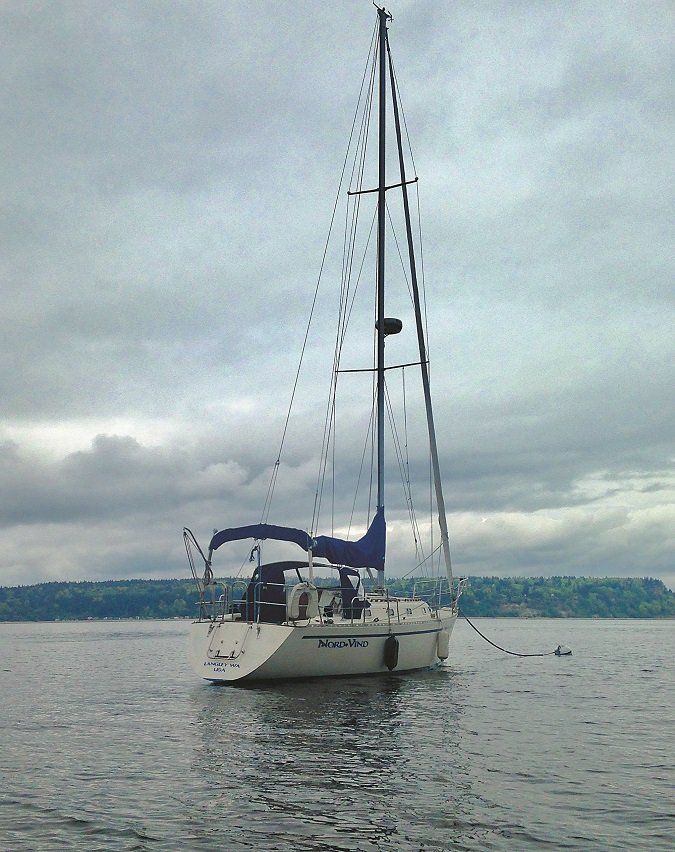
Bilge Pump Installation Tips
My Nordic 34 had what seemed like a good bilge pump installation, with a water sensing electronic switch that worked well. What I failed to recognize was this problem: the sensor was installed low enough that the pump sometimes failed to pump the bilge dry enough to uncover the sensor. The result was a pump that sometimes ran and ran. This never happened when I was aboard, and generally it happened when the boat was in the marina with the batteries charging on AC power. It wasnt until I put the boat on a mooring that I found the reason for a battery gone flat. Obviously, the remedy was to move the sensor to a slightly higher position.
Paul Mathews
Nordic Wind, Nordic 34
Langley, WA
Snubber Sense
Using snubber hooks or snap shackles will always create a point of failure. These are the weak point in the link. The snubber is a critical hardware that needs to be sized and constructed with new nylon braid and not fatigued bit of line. The purpose of it is to absorb all loads possible when the boat moves either in calm or extreme conditions. The intention is to remove all loads from the windlass and bow sprit caused by jerking or pulling in calm or gale situations. The last thing you will want is to use an old docking line that will let go due to fatigue.
A rolling hitch around the chain will take 50 percent of the strength of a new line, imagine then on an old, short docking line (under 5 meters). This will deliver a potential full shock load to your windlass. The elasticity level and length of the snubber should be sized according to boat displacement, chain grade, chain size.
If you want to sleep well, a well set anchor and a correctly-sized and rigged snubber will be the most important. In our 50-foot boat (19,000 kg fully laden) we use a bridal (5/8-inch octo-braid) spliced to 10 mm nylon line (breaking strength 5,200 kg at 35 percent stretch)-joining a 10 mm soft shackle (breaking strength 7,800 kg). The end of the snubber has a spliced eye with a thimble for the soft shackle. We use a 60 meters of 10 mm G40 chain (breaking strength, 4,300 Kg) and 60 meters of 5/8-inch certified eight-braid nylon warp.
The snubber and soft shackle attaches to the chain or warp by a 10 mm Dyneema strop covered with chafe protection sleeve (end-to end for substrate rubbing) and a bag tag hitch around the chain. Each end of the bridle attaches to each bow cleat (breaking strength 4,100 kg each) sharing all loads. There is difference between dropping the hook and anchoring.
Guillermo Gentile
Vivimus Somniata, Hanse 505
Port Auckland, NZL





























